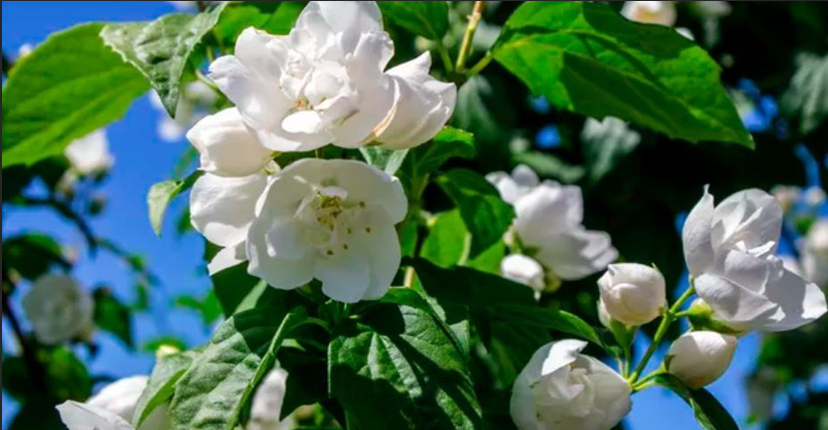Updates
The Beauty and Fragrance of Jasmine Flowers: Cultural Significance and Medicinal Properties
Jasmine flowers are a beloved flower in many parts of the world. Their beauty, fragrance, and cultural significance have captivated people for centuries. This delicate and fragrant flower is widely cultivated for its sweet scent and is often used in religious ceremonies, weddings, and other celebrations. In this article, we will explore the various types of jasmine flowers, their cultural significance, medicinal properties, and growing and caring tips.
Types of Jasmine Flowers
There are over 200 species of jasmine flowers, with the most common being Jasminum sambac and Jasminum grandiflorum. Jasminum sambac, also known as Arabian jasmine or Sampaguita, is a small, white flower with a sweet fragrance. It is the national flower of the Philippines and is often used in traditional medicine to treat various ailments.
Jasminum grandiflorum, also known as Spanish jasmine, is a larger flower with a sweet and musky fragrance. It is commonly used in perfumes and essential oils.
Cultural Significance
Jasmine flowers hold great cultural significance in many parts of the world. In India, jasmine flowers are used in religious ceremonies and are often worn in the hair by women as a sign of beauty and purity. In China, jasmine flowers are used to make tea, which is believed to have a calming effect and is often served during important ceremonies. In the Middle East, jasmine flowers are a symbol of love and are often used in weddings and other celebrations.
Medicinal Properties
Jasmine flowers are known for their medicinal properties and have been used for centuries to treat various ailments. The essential oil extracted from jasmine flowers is believed to have a calming effect on the mind and body and is often used in aromatherapy. Jasmine tea is believed to have antioxidant properties and is often used to improve digestion and boost the immune system.
Growing and Caring for Jasmine Plants
Jasmine plants are easy to grow and care for, making them a popular choice among gardeners. They prefer well-drained soil and partial to full sunlight. Jasmine plants should be watered regularly, but not overwatered, as this can lead to root rot. Pruning should be done in the spring to promote new growth and maintain the shape of the plant.
Jasmine Recipes
Apart from their beauty and medicinal properties, jasmine flowers are also used in culinary dishes. Here are two recipes you can try at home:
Jasmine Tea:
Ingredients:
* 1 tbsp of loose jasmine tea leaves
* 2 cups of boiling water
* Honey or sugar to taste
Instructions:
1. Place the jasmine tea leaves in a teapot.
2. Pour the boiling water over the leaves.
3. Let steep for 3-5 minutes.
4. Strain the tea and add honey or sugar to taste.
Jasmine Flower Syrup:
Ingredients:
* 2 cups of sugar
* 2 cups of water
* 1 cup of fresh jasmine flowers
Instructions:
1. In a saucepan, combine the sugar and water.
2. Heat over medium heat until the sugar has dissolved.
3. Add the jasmine flowers and let simmer for 10 minutes.
4. Remove from heat and let cool.
5. Strain the syrup and store in a jar.
6. Use the syrup to sweeten drinks or desserts.
Conclusion
In conclusion, jasmine flowers are not just a beautiful and fragrant addition to gardens and homes but also hold great cultural significance and medicinal properties. Their versatility extends to culinary dishes as well, making them a unique ingredient to experiment with in your cooking. Whether you use jasmine flowers in tea or as an ingredient in syrup, you’re sure to enjoy the sweet fragrance and taste that they bring to your dishes. With the right growing and care techniques, you can easily grow and maintain a jasmine plant in your home garden or on your balcony, allowing you to enjoy the beauty and fragrance of these lovely flowers all year round.
Overall, jasmine flowers are a wonderful addition to any garden or home. They offer not only aesthetic value but also cultural and medicinal significance, making them a truly unique and versatile flower. With their sweet fragrance and beauty, it’s no wonder that they have captured the hearts of so many people around the world for centuries.



















